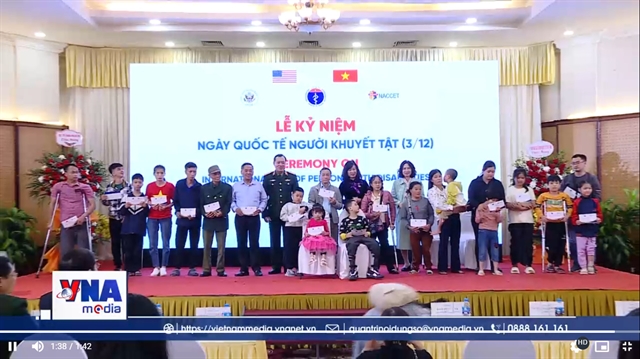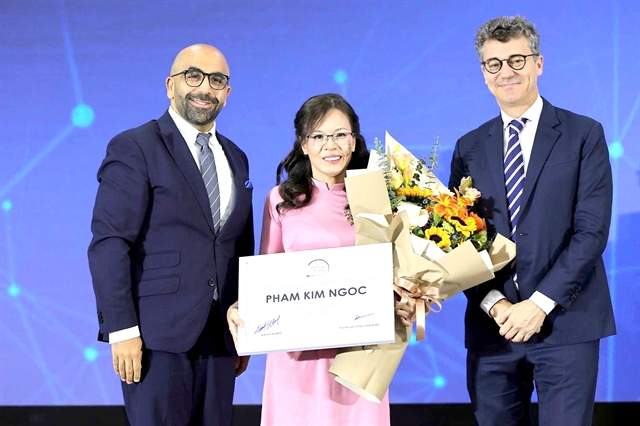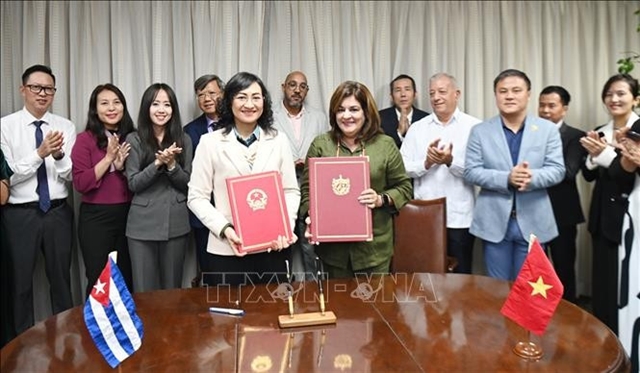 Society
Society

 |
| The National Assembly (NA) approved a resolution on the investment policy for the North-South high-speed railway project. — VNA/VNS Photo Văn Điệp |
HÀ NỘI — After the National Assembly (NA) approved a resolution on the investment policy for the North-South high-speed railway project, the Ministry of Transport affirmed its readiness and utmost determination to commence construction in 2027 and achieve substantial completion by 2035 as per the NA’s resolution.
The resolution was passed on November 30, with 443 out of 454 deputies voting in favour.
The North-South high-speed railway project has a total investment of VNĐ1.7 quadrillion (US$67 billion), making it the largest infrastructure investment in Việt Nam's history. The project is expected to provide a significant economic boost.
The railway will span 1,541 kilometres, connecting Hà Nội and HCM City and passing through 20 provinces and cities.
The entire line will feature a new dual-track system with a 1,435mm gauge, a design speed of 350kph, an axle load capacity of 22.5 tonnes and 23 passenger stations along with five freight stations.
The project will be implemented using public investment, with preparations for a feasibility study (FS) report starting in 2025.
Director of the Railway Project Management Board Vũ Hồng Phương explained that under current legal regulations, once the investment policy is approved, a feasibility study (FS) report is prepared, typically including only the basic design.
Subsequent phases involve technical design, construction drawing design and other detailed designs if necessary.
“For the high-speed railway project, the FS stage will include the preparation of a Front-End Engineering Design (FEED) to support the Engineering, Procurement and Construction (EPC) contractor bidding process. This allows the project to move to the next phase immediately after FS approval, potentially shortening procedural timelines by over two years,” Phương said.
However, Phương emphasised that legal guidelines are still needed to regulate the content and requirements for FEED, as this approach is entirely new in Việt Nam.
According to Phạm Hữu Sơn, chairman of the Board of Directors of the Transport Engineering Design Incorporated (TEDI), the project is expected to be implemented in three phases.
The first phase, which lasts between 2025 and 2027, will focus on preparing the feasibility study (FS) and Front-End Engineering Design (FEED) for Engineering, Procurement and Construction (EPC) tender documents.
The second phase for the period of 2027-35 will involve conducting EPC tenders and selecting contractors, negotiating and signing contracts to initiate construction, purchasing vehicles and equipment, and receiving technology transferred.
The final phase will include trial operations, system safety evaluations and transitioning to full commercial operation.
A special mechanism allows the project owner to prepare the FEED design directly in the feasibility study stage, replacing the basic design and shortening procedures by approximately two years.
Sơn noted that each phase of the project will face challenges requiring timely and efficient solutions.
Former Deputy Minister of Transport Nguyễn Ngọc Đông stated that without streamlined procedures, preparing the necessary steps, including procedural approvals, selecting consultants, conducting studies and obtaining higher-level approvals, could take years.
He suggested combining certain processes, such as conducting research and evaluations alongside preparing tender documents, to reduce preparation time.
"Land clearance should begin immediately to ensure site availability when the project starts construction," Đông advised.
As a leading Vietnamese contractor in urban railway projects, Phạm Việt Khoa, chairman of the Board of FECON Corporation, suggested involving international designers and experts in the design and project management stages to ensure quality, progress and cost control.
“These critical stages require the highest standards and must be error-free, as high-speed rail demands exceptional technical and safety precision,” Khoa said.
FECON also proposed that the Government establish a mechanism for direct contractor selection, allowing Vietnamese enterprises to participate in specific project components. This approach could foster long-term domestic capabilities and develop Việt Nam’s railway infrastructure industry, akin to the model China adopted over the past 30 years.
Beyond transportation benefits, Khoa highlighted that the North-South high-speed railway project is expected to be a catalyst for urban development. Major stations could serve as hubs for 'compact city' models, advancing transit-oriented development (TOD) around the railway stations.
Sơn, chairman of the Board of Directors of the TEDI, stressed that unlike typical transportation projects, the North-South high-speed railway is a comprehensive system comprising numerous interconnected components, demanding a high level of synchronisation.
From the early stages, attention must be paid to overall project planning, interface design and system integration, leveraging modern technologies in design and survey work.
"The project should adopt a flexible approach, maximising domestic participation while involving international expertise where necessary. Priority should be given to domestic enterprises for tasks they can effectively undertake," Sơn suggested. — VNS


.jpg)
.jpg)
.jpg)